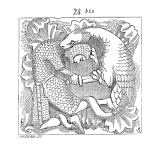
The ASQ Reliability Division (RD), copyrighted the 2003 monograph “Credible Reliability Prediction” (CRP) but lost all copies circa 2014. I pestered the RD to let me republish CRP, because people asked “How do I make credible reliability predictions?” Copyright reversion to authors is accepted practice when a publisher no longer supports a document.
[Read more…]


 How many times has an asset been installed or commissioned, only to have it fail in a few days or months when it should have lasted even longer? If you look at the study by Nowlan & Heap, they have found that only 11% of failures are
How many times has an asset been installed or commissioned, only to have it fail in a few days or months when it should have lasted even longer? If you look at the study by Nowlan & Heap, they have found that only 11% of failures are 






 A major asset is being installed, and the asset is vital to the success of a brand new, high-profit product being introduced to the site. This product is enough to keep the site operational for many years to come. The installation of the asset is
A major asset is being installed, and the asset is vital to the success of a brand new, high-profit product being introduced to the site. This product is enough to keep the site operational for many years to come. The installation of the asset is 